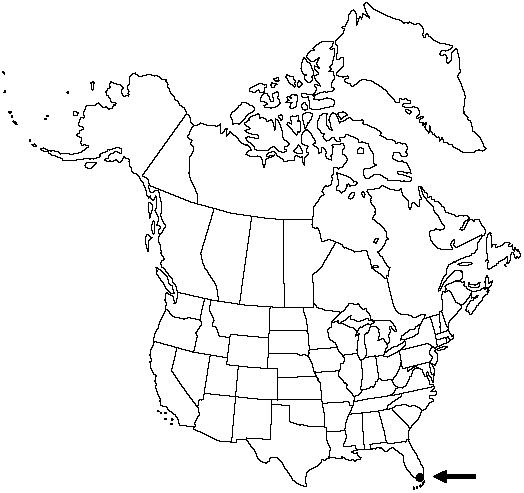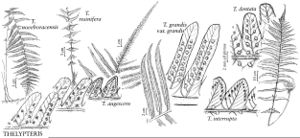Thelypteris grandis var. grandis
Stems long-creeping, ca. 1 cm diam. Leaves monomorphic, evergreen, 4–8 cm apart, to ca. 3 m. Petiole straw-colored, to 1.3 m × 0.8–1.2 cm, at base sparsely set with brown, lanceolate, hairy scales. Blade to ca. 1.7 m, broadest at or near base, gradually to somewhat abruptly tapered to pinnatifid apex. Pinnae (15–) 20–45 × 2–3.5 (–4.8) cm, incised mostly 3/4–9/10 of width; segments oblique, curved, 2–4 basal basiscopic ones (those facing base of petiole) on proximal pinnae greatly reduced or wanting; proximal 1–2 (–3) pairs of veins from adjacent segments connivent at sinus. Indument abaxially of hairs 0.1 mm on costae and veins, also of brownish, hairy scales on costae; blade tissue glabrous on both sides. Sori round, medial to supramedial; indusia pinkish to reddish-brown, glabrous; sporangia glabrous. 2n = 72.
Habitat: Mixed swamps and old logging roads
Elevation: 0–50 m
Distribution

Fla., West Indies in the Greater Antilles, St. Christopher (St. Kitts).
Discussion
In the flora Thelypteris grandis var. grandis is known only from one population in Collier County, Florida.
Selected References
None.
